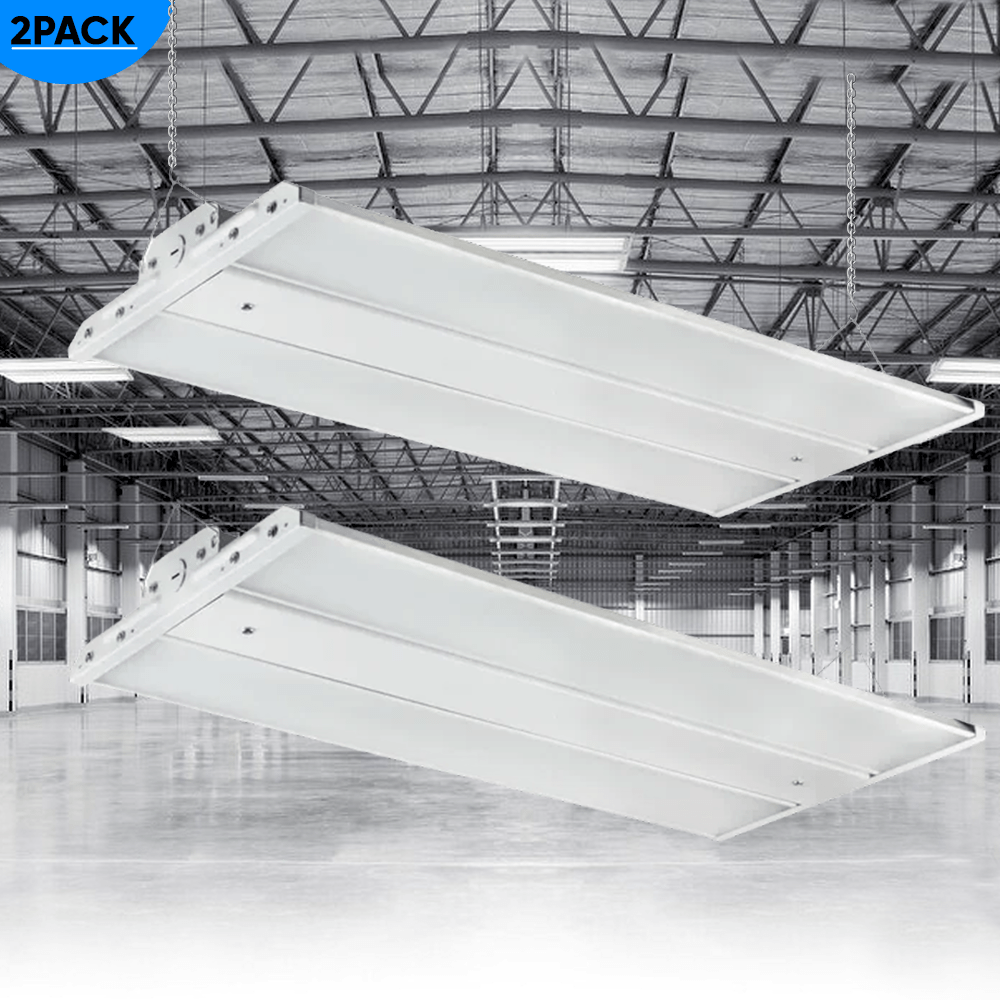Introduction
High bay LED lights have revolutionized industrial and commercial lighting solutions, offering superior efficiency and durability compared to traditional lighting systems. Understanding their power consumption is crucial for making informed decisions regarding energy use and cost-effectiveness.
Understanding LED Technology
LEDs, or Light Emitting Diodes, are semiconductor devices that convert electrical energy into light efficiently. High bay LEDs are specifically designed for spaces with high ceilings, providing intense illumination with minimal energy consumption. Compared to conventional lighting options, LEDs offer significant energy savings and longer lifespan, making them a preferred choice for large spaces.
Factors Influencing Power Consumption
The power consumption of High Bay LED Lights is primarily influenced by their wattage and luminous efficiency. Wattage indicates the amount of power the light fixture consumes, while lumens per watt (lm/W) measure its efficiency in converting electricity into visible light. Higher lumens per watt ratings signify greater energy efficiency, resulting in lower electricity bills.
Calculating Power Consumption
To calculate the power consumption of a high bay LED light, multiply its wattage by the number of hours it operates daily. For instance, a 150W LED operating 10 hours a day consumes 1.5 kWh (kilowatt-hours) of electricity daily. This calculation helps estimate energy costs and determine the financial benefits of switching to LED lighting.
Power Consumption Chart
Understanding the power consumption of high bay LED lights is crucial for evaluating their efficiency and cost-effectiveness. Below are examples of typical wattages and their corresponding energy usage:
Wattage vs. Daily Energy Consumption
- 100W LED: Consumes approximately 1 kWh (kilowatt-hour) per 10 hours of operation.
- 150W LED: Uses around 1.5 kWh per 10 hours.
- 200W LED: Requires about 2 kWh per 10 hours.
- 250W LED: Consumes approximately 2.5 kWh per 10 hours.
- 300W LED: Uses around 3 kWh per 10 hours.
Monthly Energy Cost Estimate
Assuming an average electricity rate of $0.12 per kWh, here's an estimated monthly cost for operating high bay LEDs:
- 100W LED: $3.60 (30 days x 10 hours/day x 1 kWh x $0.12/kWh)
- 150W LED: $5.40
- 200W LED: $7.20
- 250W LED: $9.00
- 300W LED: $10.80
These figures illustrate how wattage directly impacts energy consumption and operational costs. Choosing lower wattage LEDs can significantly reduce monthly electricity expenses while maintaining efficient lighting levels.
Comparison with Other Lighting Options
In comparison to fluorescent and HID (High-Intensity Discharge) lights, high bay LEDs consume significantly less energy while providing superior illumination. They emit directional light, reducing light wastage and enhancing visibility in large spaces. Over their lifespan, high bay LEDs require minimal maintenance, further reducing operational costs.
Environmental Impact
Switching to high bay LED lights contributes to environmental sustainability by lowering carbon emissions and reducing energy demand. LEDs are free of mercury and other hazardous materials found in traditional lighting, making them environmentally friendly and safe for disposal at the end of their lifespan.
Installation Considerations
Before installing high bay LED lights, consider voltage compatibility and ceiling height requirements. LEDs operate efficiently at various voltages and are suitable for different ceiling configurations. Proper installation ensures optimal performance and longevity of the lighting system.
Regulatory Standards
High bay LED lights comply with international energy efficiency standards and certifications, such as ENERGY STAR and DLC (DesignLights Consortium). These certifications ensure that LEDs meet stringent performance and quality criteria, providing assurance of energy savings and reliability.
Cost Analysis
While high bay LEDs may have a higher upfront cost than traditional lighting, they offer substantial long-term savings through reduced energy consumption and maintenance costs. Calculating the Return on Investment (ROI) helps businesses evaluate the financial benefits of upgrading to LED technology.
Case Studies and Real-World Applications
Industries across sectors, from warehouses to sports arenas, have adopted high bay LED lighting for its energy efficiency and improved lighting quality. Case studies highlight significant reductions in energy costs and enhanced workplace safety and productivity.
Future Trends in LED Technology
The future of high bay LED lighting is promising with ongoing advancements in efficiency, smart lighting controls, and integrated sensors. Innovations aim to further enhance energy savings and customization options, catering to diverse industrial and commercial applications.
Common Misconceptions
Contrary to misconceptions, high bay LED lights are suitable for various ceiling heights and environments. They offer flexibility in design and installation, accommodating different lighting requirements without compromising on performance or energy efficiency.
Conclusion
High bay LED lights represent a significant advancement in lighting technology, offering unmatched energy efficiency, durability, and environmental benefits. Understanding their power consumption helps businesses and industries make informed decisions that contribute to cost savings and sustainability goals.
FAQs
Q. How do high bay LED lights reduce energy costs?
A. High bay LEDs consume less energy due to their higher efficiency in converting electricity into light, resulting in lower electricity bills.
Q. Are high bay LED lights suitable for all ceiling heights?
A. Yes, high bay LEDs are designed to illuminate spaces with high ceilings effectively, offering flexibility in installation and lighting design.
Q. What are the maintenance requirements for high bay LED lights?
A. High bay LEDs require minimal maintenance compared to traditional lighting, reducing operational costs and downtime.
Q. Can high bay LEDs be dimmed?
A. Yes, many high bay LED fixtures are compatible with dimming controls, allowing for adjustable lighting levels to meet specific needs.
Q. What factors should I consider when upgrading to high bay LED lights?
A. Consider factors such as wattage, lumens per watt efficiency, installation requirements, and regulatory compliance to maximize benefits and savings.






















































































